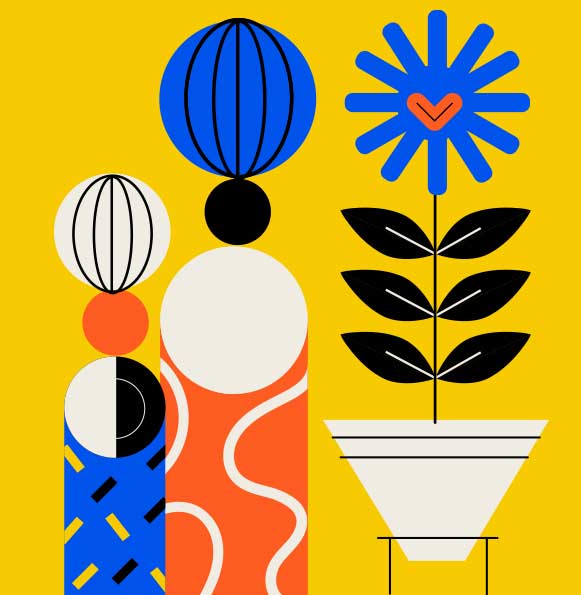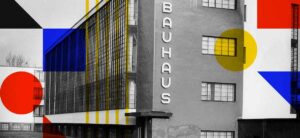A common question that many people ask when they’re looking to begin their own artistic or design project is what the difference between art and design really is. Some claim that there isn’t any difference at all, while others are adamant that they are distinct entities altogether. In this article, we’ll look at some of the basic differences between art and design, and try to answer that all-important question once and for all.
Clarify Basic Definitions
If we start with a clear definition of art, then we can better see how design fits into that category. Is design an art? What is design? Let’s break these terms down and find out.
We’ll start with visual art, or foundation art. Visual art is produced by one or more people who have chosen to express themselves through painting, sculpting, poetry, printmaking and other visual means. In its most basic form, visual art is created for aesthetic purposes—it’s beautiful. When you look at it, you appreciate it because it makes you feel something; it has some sort of emotional impact on you.
But what about design? Design isn’t just about aesthetics; in fact, design often doesn’t include any aesthetic component at all! For example, when designing a chair, there may be no need for a designer to think about whether or not their chair looks good—the focus will be on making sure that chair is comfortable and functional. In short: Aesthetics are not part of design’s foundation. So if design isn’t art…what is it?
A design is defined as a plan or specification for creating an object, system, activity, or process. The design process is intended to create either a plan, a prototype, a product, or a process. Users are always at the center of the design process. Design strives to create solutions for people, systems, or physical objects.

CANVAS FOR SELF-EXPRESSION
Creating a portfolio is not just a requirement; it’s your canvas for self-expression, a gateway to your aspirations, and the key to accessing prestigious design schools. Your portfolio is more than an art collection: it’s your opportunity to showcase creativity, growth, and dedication to design.
Art & Design in your life
As children, we are taught about artists, their lives, and how they influenced their art. From Picasso to Frida Kahlo, there’s no denying that each artist in history has made a difference in terms of both design as well as Art. However, many young people today are unsure about whether they have an innate artistic ability within them. So what is design? And more importantly what is design foundation? How can you differentiate between Art & Design? Design is something that almost everyone experiences daily in some way or another. Design can be found everywhere from your morning coffee mug to your iPhone case, which means it’s important for everyone to know what design really means. Design is all around us; however, it isn’t always recognized as such because most of us don’t know how to identify it properly.
Design isn’t just limited to visual arts like paintings or sculptures; design also includes fashion design, interior design and graphic design just to name a few examples. In fact when most people think of art they tend not associate it with things like graphic design or fashion; however these things are considered forms of art too!
How to Tell if Something Is Art or Design
It may not be easy to tell at first, but there are ways to distinguish between art and design. If you ask me, I would say that all visual works can fall into one of these categories. Here’s what they mean Art is an expression of emotion or thought. This doesn’t necessarily mean it has to be abstract or representational, though those are common forms of expression in art. The important thing is that it evokes some kind of reaction in you as a viewer—whether it makes you think about something new or just brings back fond memories. Essentially, if it makes you feel something (and if it isn’t functional), then it’s probably art.
Design is a tool for solving problems . So while design might make us feel something too (for example, delight when we look at Apple products), its main purpose is to solve some kind of problem by making things easier for people who use them.
So what is the difference ?
- While art only needs to exist, design always need functionality.
- While art should evoke feelings and ideas, designs ought to address issues.
- While artists work instinctively utilising their gut, designers work methodically using a data-driven or mathematical technique.
- A design is intellectual, whereas art is perceptual.
- Art is developed for oneself; designs are made for other people.
- While design skills can be taught and polished, artistic talent is thought to be mostly a natural gift.
- Artists are not required to make such compromises, whereas designers must if their vision conflicts with commercial objectives.
- While art might have any purpose the creator chooses, no purpose at all, or an ambiguous or interpretive meaning, design always has a purpose.
- While a design is constrained, art is not.
Similarities Between Art and Design?
- Shape, colour, line, contrast, balance, rhythm, and other basic creative visual elements are shared by both design and art.
- To hone their creative skills, both designers and artists practise artistic techniques including painting, sculpture, and drawing.
- Visually appealing artworks and designs are both possible. Both art and some types of design can be admirable enough to place on a wall or put on display.
- Both designs and works of art can be utilised to convey narratives. However, whereas telling stories and expressing emotions are the main purposes of art, designers only use narrative as a tool to further a certain objective.
Visual Art & Design foundation is necessary for art students, who then create critical work samples to present to professors and get feedback on. For example, in order to be accepted into College of Art & Design’s Bachelor of Fine Arts program, applicants must submit five distinct creative works created in one medium. Creative works must showcase artistic vision as well as craftsmanship; there are no limitations on medium or style.

DESIGNPORTFOLIO DEVELOPMENT
Creating a portfolio is not just a requirement; it’s your canvas for self-expression, a gateway to your aspirations, and the key to accessing prestigious design schools. Your portfolio is more than an art collection; it’s your opportunity to showcase creativity, growth, and dedication to design








